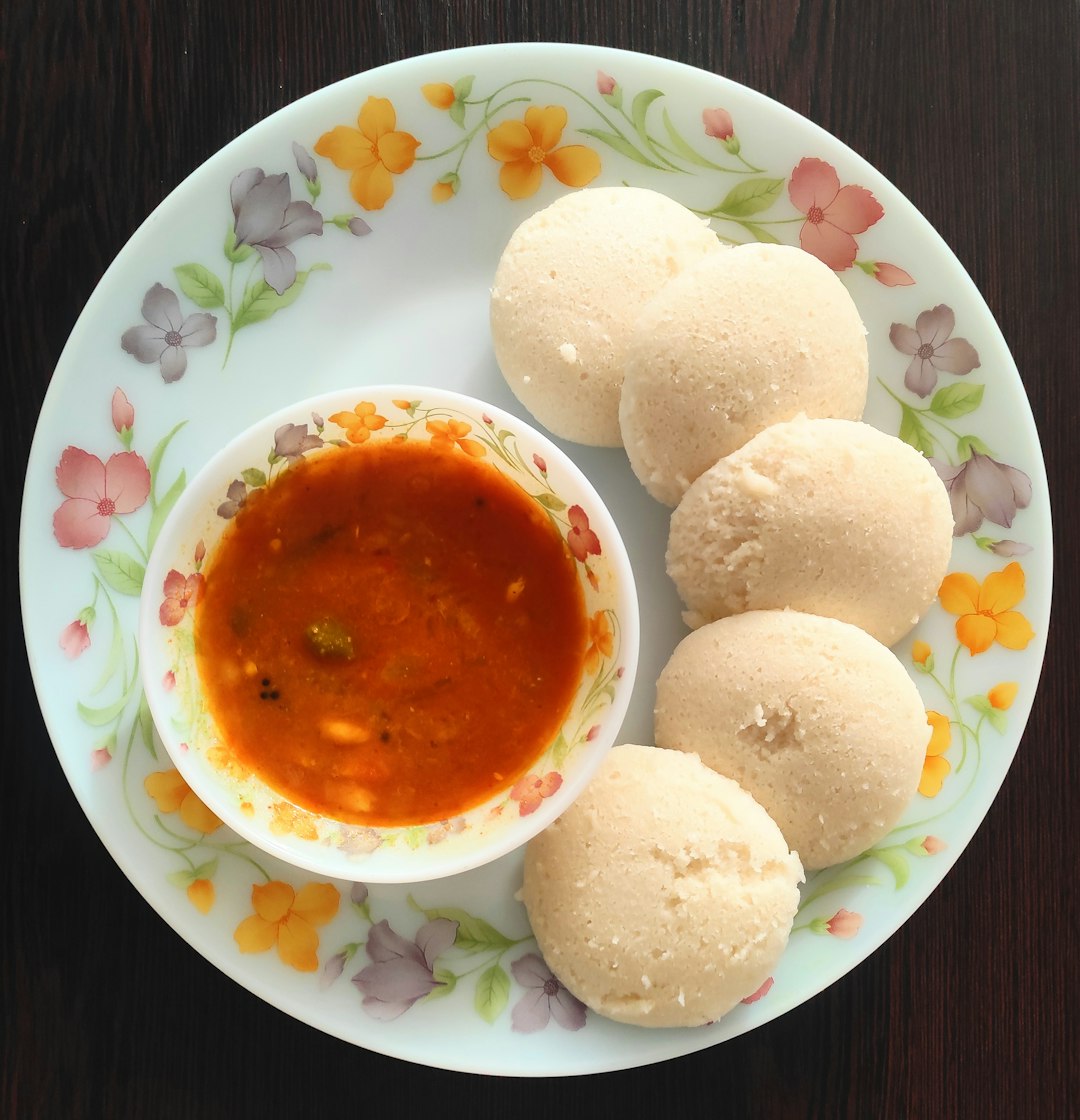Sambar
Ah sambar. What a perfect marriage of flavour, texture, and warmth. It's like the otherworldly lovechild of a hearty soup and a complexly spiced stew. No two sambar recipes are quite the same, but it generally begins with a base of toor dal, which is cooked until creamy and combined with a flavourful blend of spices such as mustrad seed, red chilli powder and asafoetida. What really sets sambar apart from other dishes, however, is its medley of vegetables. From okra, tomatoes, aubergines, onions and pumpkin to turnips, green beans and even potatoes, this colorful dish can be found in pantries all over India.
The dish is usually simmered slowly for hours, allowing the flavors to build and mingle. This also creates a luscious, almost velvet-like consistency. Drizzled over steaming hot rice and a dollop of freshly made ghee, sambar is an incredibly satisfying meal.
Sambar can be dressed up or down depending on the level of complexity you desire. For instance, if you are aiming for a milder flavor, you can try adding some coconut milk or ginger. But if you’re looking for a more intense flavor, some cumin and mustard seed powder can take your sambar to the next level.
No matter how you prepare it, sambar is sure to tantalize your taste buds and make you go back for seconds. Its deliciously comforting flavor is a reminder that traditional dishes like this one can still have a place in modern cuisine.
Sambar recipes
Amazing Sambar recipes sourced from the web.
The origin of Sambar
The much-beloved dish Sambar is a staple of Indian cuisine, and its origins are just as rich and varied as the people that helped to create it. A steaming bowl of Sambar brings to mind a vibrant history and an artful blend of culture, regional ingredients, and centuries of cookery traditions.
Sambar dates back to at least the 16th century, when notes of its existence appear in written accounts from various travelers throughout India. The dish is believed to have originated from Tamil Nadu in Southern India as part of the daily meal offerings to temple priests. Later, it spread throughout India, becoming popular in other regions including Kerala, Maharastra, and Karnataka. Each region developed their own unique version, adhering to traditional cookery methods and utilizing local ingredients.
Over the centuries, Sambar evolved through the amalgamation of different spices and cooking techniques. Ginger, tamarind, and coconut, along with the sambar powder mix of coriander, cumin, fenugreek, and other spices, were brought together in a harmonious medley. As the dish continued to be refined through the contributions of diverse communities, vegetables, legumes, and lentils were added.
Although the exact date of origin for Sambar remains unknown, one thing is for certain: it takes human ingenuity and gastronomic creativity to create a dish as beloved and widely enjoyed as Sambar. Its exotic flavors, fragrant aromas, and nourishing nutrients are fundamental to India’s culinary history, and a testament to the unique recipes and delectable dishes that we cherish today.
Types of Sambar
Sambar - a classic South Indian dish that has been enjoyed for generations - is a delectable combination of lentils and spices, cooked to perfection. Its versatility allows for endless recipes with a range of ingredients and complexity. To truly appreciate it, here's a closer look at the different varieties of sambar.
The first, and perhaps most popular, is the popular vengaya (onion) sambar. A tart and spicy blend of toovar dal, tamarind, and curry leaves, this version is packed with flavor and is often served on its own or as an accompaniment to rice. It can also be enhanced with a variety of vegetables such as okra and carrot, as well as spices like fenugreek and mustard.
Coconut sambar is another favorite, featuring flavorful fresh coconut and a host of spices including cumin seed, red chillies, coriander, and fenugreek. This velvety concoction is generally used as a side dish for idlis, dosas, and many other dishes.
A delightful variation is the palak sambar, with a vibrant hue thanks to the addition of steamed spinach. The subtle sweetness of this dish is balanced with the seasoning of mustard and cumin, making it a great accompaniment to rice and breads.
For a more savory profile, try the tomato sambar. It has all the spicy notes you'd expect from sambar, but with the added tang of tomatoes and the pungency of garlic and fenugreek leaves. This version pairs perfectly with steamed idlis, dosas, and even chapatis.
Finally, if you're looking for something a bit sweeter, consider the jaggery (unrefined sugar) sambar. This rendition combines the robust earthiness of toovar dal with the light sweetness of jaggery and tempered with a hint of ginger and chillies.
Sambar is a wonderful dish with so many variations - each offering its own unique taste and character. Whether you opt for the traditional onion variety or experiment with one of the more exotic types, you're sure to find something you'll love.



